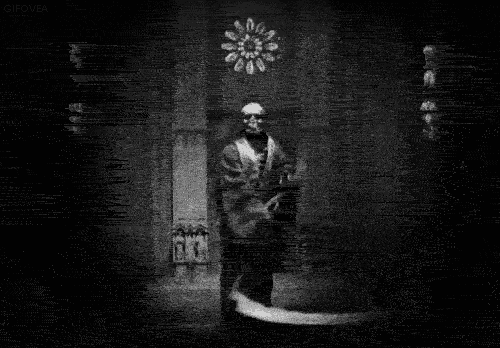In ancient Roman mythology, the Lemures (lem’u-rez) were greatly feared evil spirits who caused disease and infection. They were thought to be malignant spirits, specters or ghosts who haunt the earth by night and to possess great power for evil over the living.

The reputation of the lemures really took off at the beginning of this 6th Age shortly first Pontifex Maximus of this 6th Age, Augustus Caesar had conquered the Gnostic Greek Hellenes, Cretans, and the Greco-Egyptian empire. It was at this time that many of the Gnostic philosophers from Greece, Crete, and Egypt were brought into Caesar’s inner circle.
These teachings would eventually develop over time to include religious rites, customs, secret magick and the ancient Roman festival of Lemuria or Lemuralia. Many of these rites would later be incorporated into the Catholic (Universal) Church.
Ovid, the Roman poet who lived during the time of Augustus describes the lemures as vagrant, unsatiated and potentially vengeful di manes or di parentes, ancestral gods or spirits of the underworld. Ovid had written in Fasti 5.421ff:
“ritus erit veteris, nocturna Lemuria, sacri:
inferias tacitis manibus illa dabunt.”
“It will be the ancient sacred rites of the Lemuria,
When we make offerings to the voiceless spirits.”
Another poet during the time of Augustus, Horace says that the Lemures were usually identified with the larvae, spirits who in consequence either of wicked lives or of a violent death were doomed to restless roamings about the world at night; while the lares were the spirits of the good departed ones. But sometimes the term lemures was used to include both larvae and lares (Preller Rom. Myth? p. 499). The festival of the Lemuria, at which they were honoured for three nights (on May 9th, 11th and 13th), is described by Ovid Fast. v. 419—492. (The epistles of Horace)
Horace (65-8 B.C.) writes in Epistles 2.2.209:
“nocturnos lemures portentaque Thessala rides?)”
“Do you laugh at dreams, miracles, magical terrors,
Witches, ghosts in the night, and Thessalian portents?”
Church Father and Doctor, Saint Augustine had written about the Lemures and Lares. Augustine writes in chapter 11 of the City of God;
“Lares if good,
Lemures (larvae) if evil, and
Manes if indeterminate.”
Augustine further writes; “[Plotinus (3rd century A.D.)] says, indeed, that the souls of men are demons, and that men become Lares if they are good, Lemures or Larvae if they are bad, and Manes if it is uncertain whether they deserve well or ill. Who does not see at a glance that this is a mere whirlpool sucking men to moral destruction?
For, however wicked men have been, if they suppose they shall become Larvae or divine Manes, they will become the worse the more love they have for inflicting injury; for, as the Larvae are hurtful demons made out of wicked men, these men must suppose that after death they will be invoked with sacrifices and divine honors that they may inflict injuries. But this question we must not pursue. He also states that the blessed are called in Greek eudaimones, because they are good souls, that is to say, good demons, confirming his opinion that the souls of men are demons.”
In the Apocolocyntosis 9.3 (about the deification of Emperor Claudius, attributed to Seneca) and Pliny’s Natural History, these Lemures/Larvae are tormentors of the dead.
In the book, Disease-spirits and Divine Cures Among the Greeks and Romans By Cesidio Ruel Simboli, these lemures are described as being vaguely understood darkly defined spirits that are greatly feared and being nocturnal in nature. Simboli writes;
“The spirits of the Lemuria were called the Lemures. As in the case of their gods, the Romans never endowed the inhabitants of their spirit-world with any definite shapes. This spirit-world was vaguely understood, darkly defined, but greatly feared.
The nearest approach to a definition of the spirits is “umbras vagantes hominum ante diem mortuorum atque ideo metuendas,” or, more commonly, “larvae nocturnal et terrificationes imaginum et bestiarum.” Here, it would seem, the term larva and lemures are interchangeable. But Apuleius thinks that “lemures is a general word for spirits after they have left the body, while those that haunt houses are specially called larva.”
The Encyclopaedia Britannica Or Dictionary of Arts, Sciences, Volume 13 describes “the lemures of Antiquity as spirits or hobgoblins, restless ghosts of departed persons, who return to terrify and torment the living. These are the same with Ian-e, which, according to the ancients, wandered throughout the world frightening good people, and plaguing the bad. For this reason, lemuria or feasts were instituted at Rome to appease the manes of the defunct. Apuleius explains the ancient notion of manes.
The souls of men released from the bonds of the body, and freed from performing their corporeal functions, become a kind of demons or genii, who were formerly called lemures. Of these lemures, those that were kind to their families were called lam familiares, but those who, for their crimes, were condemned to wander continually, without meeting with any place of rest, terrifying good men, and vexing the had, were vulgarly called law’s.
An ancient commentator on Horace mentions, that the Romans wrote lemum for nemures, a word formed from Remus, who was killed by his brother Romulus, and who returned to the earth to torment him. But Apuleius observes, that, in the ancient Latin tongue, lemures signifies the soul of a man separated from the body by death.”
In Republican and Imperial Rome, May 9, 11, and 13 were dedicated to the household practices of Lemuralia or Lemuria. The head of household (paterfamilias) would rise at midnight and cast black beans behind him with averted gaze; the Lemures were presumed to feast on them. Black was the appropriate color for offerings to chthonic deities.
The 18th century French Catholic Gnostic, Eliphas Levi writes of “Larvae and lemures, shadowy images of bodies which have lived and of those which have yet to come, issued from these vapors by myriads…”
33rd Degree Freemason, Robert McCory writes about the Lares, Lemures, and Manes in the “Illustrated History and Cyclopedia of Freemasonry.” Macoy had said;
“In Roman antiquity, the gods of the lower world; the benevolent deities; generally applied to the souls of the departed. According to Apuleius, the Manes were originally called Lemures, and consisted of two classes—the Lares and the Larvae; the former of whom were the souls of those who had led virtuous lives, and the latter of those who had lived improperly. At a later period the term Manet came to be a general designation for both.”
The Russian Madame, and occultist, Helena Blavatsky describes the Lemures and larvae in The Theosophical Glossary. Blavatsky writes;
“Lares (Lat.). These were of three kinds: Lares familiares, the guardians and invisible presidents of the family circle; Lares parvi, small idols used for divinations and augury: and Lares practites, which were supposed to maintain order among the others. The Lares are the manes or ghosts of disembodied people.
Apuleius says that the tumulary inscription, To the gods manes who lived, meant that the Soul had been trans formed in a Lemure: and adds that though “the human Soul is a demon that our languages may name genius “, and ” is an immortal god though in a certain sense she is born at the same time as the man in whom she is, yet we may say that she dies in the same way that she is born.”
Blavatsky continues, “Which means in plainer language that Lares and Lemures are simply the shells cast off by the Ego, the high spiritual and immortal Soul, whose shell, and also its astral reflection, the animal Soul, die, whereas the higher Soul prevails throughout eternity.
Larva (Lat.). The animal Soul. Larva are the shadows of men that have lived and died.”
What is the meaning of the word lemure?
The word lemure became associated and or interchangeable later with the word are larvae from Latin larva which means “mask.” In the ancient world, they believed these lemure spirits to be ghosts or more appropriately, larvae who were able to torment their victims or bring blessings.
If we look at the word lemure, we will find that it is a compound word composed of the two words “le” and “mure.” It can be a noun or even an adjective.
The word le is a suffix and in Latin, they used it for the beginning of words and today we use it on the end of words. For example, it is used in forming nouns having or originally having a sense such as the word
“mantle.” The Middle English is -el, -elle, partly from Old English and partly from Old diminutive French (based on Latin forms). If we use it in forming adjectives from an original verb, it would mean apt to or liable to as in “brittle.”
From Old French mur, from Latin mūrus, from Old Latin *moerus, *moiros, from Proto-Indo-European *mei (“to fix, to build fortifications or fences”). From Old Latin *moerus, *moiros, from Proto-Indo-European *mey- (“to fix, to build fortifications or fences”), see also Latin mūnīre (“to protect”), Old Norse -mæri (“border-land, boundary”), Old English mære (“landmark, border, boundary”).
As I mentioned above, the lemures were connected and or could mean the same thing as the larvae. If we look at the etymology of the word larva, we will find that it is composed of the two words lar and va.
The definition of lar or the plural Lares \ˈler-(ˌ)ēz\ is a tutelary god or spirit associated with Vesta and the Penates as a guardian of the household by the ancient Romans.
Va is from the Latin vādit, third person singular present active indicative of vādō. It is also rarely used as a second person singular imperative form, meaning “go”, from Latin vāde.
An interesting note is that the word “le” in Danish means a scythe (farm tool). The same tool of the angel of death. Also, if we look at the word diminutive means extremely or unusually small.

Another Apocalyptic para-l-el is the word “scythe” derives from Old English siðe.[1] In Middle English and after it was usually spelt “sithe or sythe.”
This is well known in history as the main tool for the angel of death known in English as The Grim Reaper and the Greek Titan Cronus were often depicted carrying or wielding a scythe. According to Jack Herer and “Flesh of The Gods” (Emboden, W.A., Jr., Praeger Press, NY, 1974.); the ancient Scythians grew hemp and harvested it with a hand reaper that we still call a scythe.
In our modern Lemurian cult-u-re, we can find ancient Gnostic clues to the past through mega movies such as the Star Wars franchise and the Dark Sith Empire with the Lord Scythes with mind parasites/worms who are running the show (matrix).
I will explain this Holy-wood movie about the Lemures known as the Siths with their Lord Scythes and Supreme Grand Masonic Master Snoke in a future Gnostic Warrior media transmission from this Jedi on the Dark Side.
May the Force (phosphorus) be with you always….


Moe is the founder of GnosticWarrior.com. He is a father, husband, author, martial arts black belt, and an expert in Gnosticism, the occult, and esotericism.







